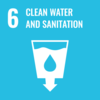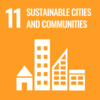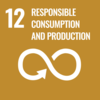Bath Spa University
Finalist
Bath Spa Phase 1 Decarbonisation
The objective of this project was to halve carbon emissions in ten years, laying the foundations of future complete decarbonisation of the estate by 2030.
A ten-year work plan was developed in 2010, with the goal of halving Scope 1 and 2 carbon emissions by 2020. We finished the work three years ahead of schedule due to an innovative Energy Performance Contract (EPC).
Future proofing was via the installation of two biomass-fired district heating networks, set for heat pump technology when it becomes cost-effective at the required scale, when the biomass boilers will be at the end of life.
Energy efficiency has been improved by over 45% (kWh/m2). Carbon efficiency is around 65% better than in 2010 and total carbon emissions have been cut by 50%. This is despite a 50% increase in building floor area and a 20% increase in operational intensity.
Annual carbon savings achieved with the initiative:
- CO2t savings 2022/2023: 2550 (Actual) / CO2t savings 2023/2024: 2600 (Estimated).
- CO2t savings over the life cycle of the project: 24,500 over 10 years.
Top 3 Learnings
- Build a solid business case: Building a solid business case, which demonstrates not only financial cost-effectiveness, but benefit to the environment, the business and to staff and students is essential.
- Think BIG: The old maxim often advised in relation to financing energy conservation measures in organisation of, implementing the “low hanging fruit” to gain the confidence of senior management can only ever get you so far. The result of this approach is that the difficult, long-payback projects just get more difficult to finance as time goes by. Much better is to develop a programme of works, bundled together in such a way as the short-term payback projects can “carry” the longer-term projects, in a single programme with an acceptable length of return.
- Embrace the Failures: Be open about the projects that don’t work and understand why they haven’t worked. Share this understanding to prevent it happening again in your and other organisations. Learn from others what hasn’t worked and why.



